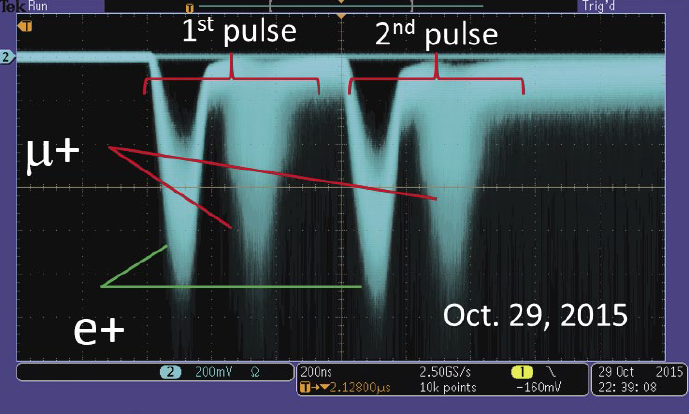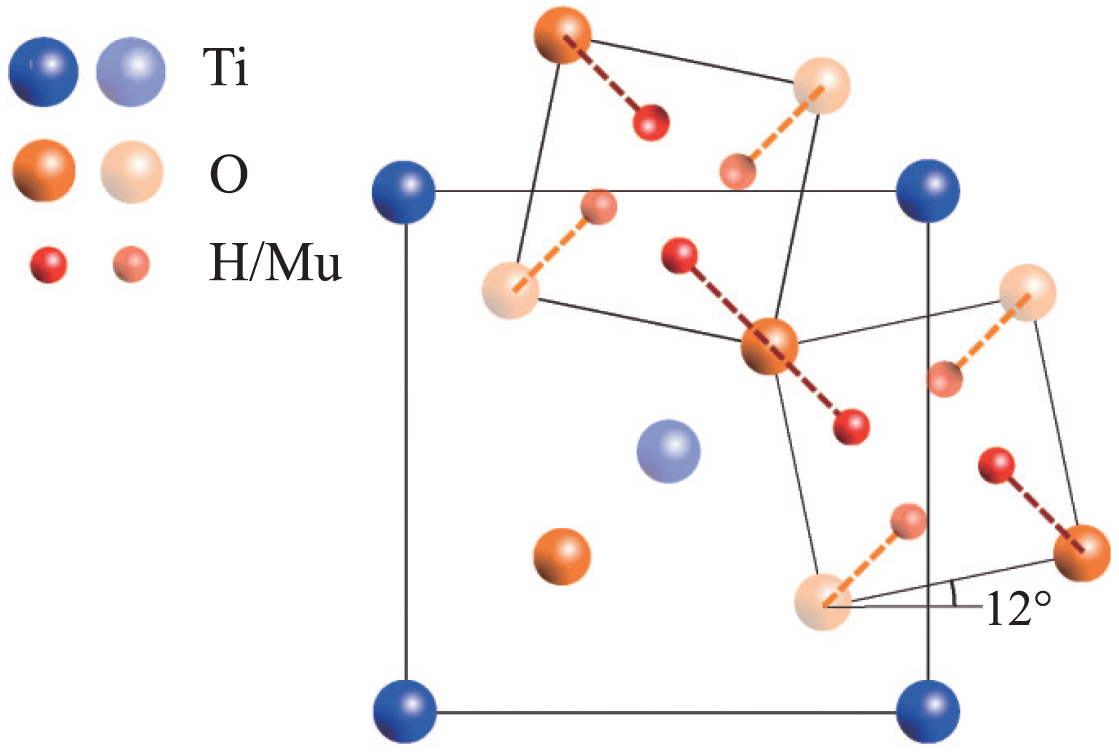2015 at MSL
◤ Laboratory Activities

Fig1: Signals of extracted positron and muon beams, exhibiting the doublebunched pulse structure at the beam extraction window in S1. [enlarged view (344KB)]

Fig2: Position of interstitial H in rutile TiO2. This is reprinted from [2]. [enlarged view (315KB)]
On October 29, 2015, the surface muon beamline, so-called S-Line, finally achieved its primary goal of extracting positively charged muons with a momentum of 28 MeV/c at one of four planned experimental areas, S1, as seen in Fig. 1. The beamline tuning was further accelerated by installing a muon spin rotation/relaxation/resonance (μSR) spectrometer which is fabricated by the element strategy research project for electron materials. The automatic tuning program, socalled ForTune, has been used to tune the beamline parameters to provide a well-focused muon beam at the sample position by gathering µ-e decay events counted by Kalliope µSR detectors that are assembled in the spectrometer.
In the U-line, which is dedicated uniquely to a variety of studies, such as nano-science and multilayered thin film magnetism, ultra slow muons (USM) were successfully observed on February 21, 2016, The observed intensity of the USM, produced by laser resonant ionization of muonium atoms evaporated from hot tungsten (2000 K), is 35 μ+/s, which is higher than that developed by KEK and RIKEN at Rutherford Appleton Laboratory (RAL) (in collaboration with KEK) (20 μ+/s). The improvement of pulsed laser system will achieve USM beams with narrower energy width for higher depth resolution in the sample. Further enhancement of laser power (1.7 μJ/pulse to 71 μJ/pulse for Lyman-α light and ~100 mJ/pulse/cm2 to 350 mJ/pulse/cm2 for 355 nm light) and improvement of transportation of USM will realize more intense USM beam at the experimental areas.
As a scientific development, microscopically invaluable information in a metal oxide was obtained. TiO2 has a rich variety of potential applications in both electronic and optoelectronic devices, although occurrence of unintentional n-type doping remains as a problem. As shown in Fig. 2, recent μSR study with angle-resolved hyperfine parameters showed that interstitial hydrogen as a Ti-O-Mu(H) complex could be the origin of such n-type doping [2].